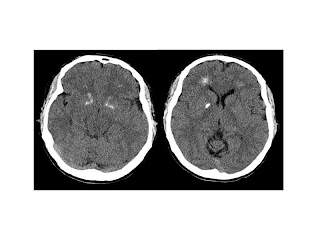Whate is tinea pedis (athlet's foot ) ?
Tinea pedis is a fungal infection of the foot, that is common among homeless populations.Fungi are plant-like organisms tha live as parasites or saprophytes
Fungi that cause superfcial infections of the skin and nails are called dermatophytes.
These fungi infect the keratin of the top layer of the epidermis as well as the nails and are responsible for Tinea pedis.
Dermatophytes grow will in moist, occlusive environment. Condition such as diabetes and HIV / AIDS interfere with the body's immune functions and increase the risk of aquiring dermatophyte infection.
Whate is the prevalence of Tinea pedis ?
Nearly everyone in the wold is exposed to the fungi tha cause Tinea pedis. Each person's immune system determines wherther infection results from such exposure. As adults age, tiny vravks develop in the skin of the feet, increasing the susceptibility to Tinea infections.
Once acquired , a fungal infection can linger inactively for years and later become active when person reaches the age of 60 - 70.
More than 70% of the US population will have Tinea pedis at the same time in their lives.
Diabetes is a significant risk factor, as diabetics are 50% more likely to have a fungal infection than non-diabetics.
How can i know that i've Tinea pedis ?
There are three forms of Tinea pedis:
- Interdigital - macerated, scaly, fissured skin occures between the toes, especially in the web space between the 4th and 5th toes.
- Planter ( moccasin foot ) -fine, powdery scale is present on reddened background of the sole, heel, and side of the foot.
- Vesicular (bullous) - an acute inflammatory reaction consisting of vesicles and pustules
Individuals may be asymptomatic or may experience burning, itching, or stinging.
The diagnosis of Tinea pedis is usually made clinically and based upon the examination of the affected area. Definitive diagnosis is made by scraping the skin for a KOH preparation, a skin biopsy, or culture of affected area. The KOH is less likely to be positive in sever cases with maceation of the skin.
In mild cases the fungi can usually be recovered in a scraping. In sever cases it is recovered less than half the time.
In evaluation and diagnosis of Tinea pedis, clinicians should keep in mind that superinfection with bacteria can occure.
Toenails infected appear thicker-ened, discolored, and dystrophic.
How can we treat Tinea pedis infections ?
Treatment modalities come in several forms.
Topical agents include creams, powders, and sprays. Creams and sprays are more effective than powders.
Topical agents are generally effective in mild forms of interdigital Tinea pedis. Non-prescition, over-the-counter (OTC) topival drugs work moderately well. The less expensive OTC creams, such as clotrimazole (Lotrimin) and miconazole (Micatin), work as well as the more expensive OTC creams, but they require 4 weeks of traetment compared to 1-2 weeks needed with terbinafine (Lamisil) creams.
In our practices, the first choice of treatment is usually an OTC cream.
If Tinea pedis is extensive, a prescription topical antifungal would be used. Econazole (spectazoe) and nystatin (Mycostatin) are prescription topical antifungal which are fungicidal and achieve a cure with shorter time. In more extensive Tinea pedis or with failure of topical agents, oral medication by prescription can be used as fluconazole (Diflucan capsule)
The length of tratment with topical agent may take 4 weeks depending on the cream chosen. Duration of therapy with oral agents can be 1-2 weeks depending on chosen medication.
In case of Tinea pedis with inflammatory signs and symptoms (including erythema, pruritis, and burning), a combination steroid/antifungal cream can be used.
Onychomycosis requires treatment with oral antifungal medication for an extended period of time.
Mode of transmission of Tinea pedis
Warm moist areas are fungi friendly. Optimal environments are dark, damp, and warm. Poor hygiene, closed footwear, minor skin or nail injuries, and prolonged moist skin creat ideal environments for transmission.
Tinea pedis is contagious and spread through direct contact with people or opjects such as showers, shoes, socks, lockers rooms, or pool surface. Pets can carry the fungus and may also be a source of transmission.
How can we prevent Tinea pedis infections
Keeping the feet clean and dry is one of the best methods of prevention. Other methods are well- ventilated shoes that fit properly and are not tight.
Alternating shoes daily will allow shoes to dry throughly in between wearing. Wool socks draw moisture away from feet and are highly recomended.
Wearing sandals or flip-flops in public showers or pool area may also be helpful.
The use of foot powders is helpful for people susceptible to Tinea pedis who have frequent exposures to areas where the fungus is suspected.
In case of Tinea pedis with inflammatory signs and symptoms (including erythema, pruritis, and burning), a combination steroid/antifungal cream can be used.
Onychomycosis requires treatment with oral antifungal medication for an extended period of time.
Mode of transmission of Tinea pedis
Warm moist areas are fungi friendly. Optimal environments are dark, damp, and warm. Poor hygiene, closed footwear, minor skin or nail injuries, and prolonged moist skin creat ideal environments for transmission.
Tinea pedis is contagious and spread through direct contact with people or opjects such as showers, shoes, socks, lockers rooms, or pool surface. Pets can carry the fungus and may also be a source of transmission.
How can we prevent Tinea pedis infections
Keeping the feet clean and dry is one of the best methods of prevention. Other methods are well- ventilated shoes that fit properly and are not tight.
Alternating shoes daily will allow shoes to dry throughly in between wearing. Wool socks draw moisture away from feet and are highly recomended.
Wearing sandals or flip-flops in public showers or pool area may also be helpful.
The use of foot powders is helpful for people susceptible to Tinea pedis who have frequent exposures to areas where the fungus is suspected.






